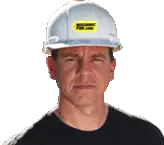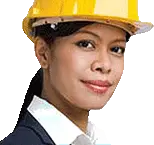| 1. |
__________________structures are countermeasures which project into the flow field at an angle or perpendicular to the direction of flow. |
|
|
Transverse river training |
|
|
Longitudinal river training |
|
|
Areal river training |
|
|
None of the above |
| 2. |
Portable instruments are more cost effective in monitoring an entire bridge than fixed instruments. |
|
|
True |
|
|
False |
| 3. |
The river environment characteristics that can have a significant effect on countermeasure selection or performance are which of the following? |
|
|
Bend radius |
|
|
Flow velocity |
|
|
Bank condition |
|
|
All the above |
| 4. |
Five factors are used to compute a Selection Index (SI) for each countermeasure:
S1: Bed material size and transport
S2: Severity of debris or ice loading
S3: Constructability constraints
S4: Inspection and maintenance requirements
LCC: Life-cycle costs
The Selection Index is calculated as ______________? |
|
|
SI = (S1 + S2 + S3 + S4)/LCC |
|
|
SI = (S1 – S2 x S3 x S4)/LCC |
|
|
SI = (S1 x S2 + S3 x S4)/LCC |
|
|
SI = (S1 x S2 x S3 x S4)/LCC |
| 5. |
Mass wasting is the removal of soil particles by the velocity and turbulence of the flowing water. |
|
|
True |
|
|
False |
| 6. |
Which of the following issues should be considered when developing life-cycle cost estimates ____________.? |
|
|
Haul distance |
|
|
Site access |
|
|
Local labor rates |
|
|
All the above |
| 7. |
The year-to-year risk (expected loss) of scour failure associated with a bridge installation over water is determined by Equation ______________________. where: Risk ($) = Risk of scour failure (annualized for 1 year given current physical condition) K = Risk adjustment factor based on foundation type and type of span (NBI Item 43), and P = Probability of failure each year (NBI Item 113 or Items 26, 60, 61, and 71) |
|
|
Risk ($) = KP [(rebuild cost) + (running cost) – time cost)] |
|
|
Risk ($) = KP [(rebuild cost) + (running cost) x time cost)] |
|
|
Risk ($) = KP [(rebuild cost) + (running cost) + time cost)] |
|
|
Risk ($) = KP [(rebuild cost) x (running cost) + time cost)] |
| 8. |
_____________ involves the removal of material from the bed and banks across all or most of the width of a channel. |
|
|
Contraction Scour |
|
|
Contraption Scour |
|
|
Local Scour |
|
|
None of the above |
| 9. |
__________ is known as sediment that is transported in a stream by rolling, sliding, or skipping along the bed or very close to it; considered to be within the bed layer (contact load). |
|
|
Bed load |
|
|
Bed material |
|
|
Bedrock |
|
|
None of the above |
| 10. |
_____________ is a cross-sectional area beneath a bridge that is available for conveyance of water. |
|
|
Bridge owner |
|
|
Bridge waterway |
|
|
Bridge opening |
|
|
None of the above |
| 11. |
Bridge owners should make sure that responsible parties identified in the POA understand their roles and responsibilities that they are provided with periodic training on the implementation of selected components of a POA such as bridge closure/opening procedures. |
|
|
True |
|
|
False |
| 12. |
___________ engineering can be a useful and cost-effective tool in controlling bank or channel erosion, while increasing the aesthetics and habitat diversity of the site. |
|
|
Aerospace |
|
|
Biotechnical |
|
|
Mechanical |
|
|
Civil |
| 13. |
___________ is an aspect of a stream channel in plan view, with particular reference to the degree of sinuosity, braiding, and anabranching. |
|
|
Channelization |
|
|
Channel diversion |
|
|
Channel pattern |
|
|
Channel process |
| 14. |
Foundation strengthening is a modification and it is a Structural countermeasure. |
|
|
True |
|
|
False |
| 15. |
The countermeasure matrix was developed to identify distinctive characteristics for each type of countermeasure. Five categories of countermeasure characteristics were defined to aid in the selection and implementation of countermeasures, which of the following is not a category of countermeasure characteristics? |
|
|
Functional Applications |
|
|
Suitable River Environment |
|
|
Bed rock |
|
|
Maintenance |
| 16. |
In selecting a countermeasure, it is necessary to evaluate how the stream might respond to the countermeasure, and also how the stream may respond as the result of other activities upstream and downstream. |
|
|
True |
|
|
False |
| 17. |
Estimating life-cycle costs for pier scour countermeasures requires consideration which of the following major components? |
|
|
Initial construction materials and delivery costs |
|
|
Initial construction installation costs associated with labor and equipment |
|
|
Periodic maintenance during the life of the installation |
|
|
All the above |
| 18. |
_________ is Vortex-type motion of a fluid flowing contrary to the main current, such as the circular water movement that occurs when the main flow becomes separated from the bank. |
|
|
Eddy current |
|
|
Drift |
|
|
Entrenched stream |
|
|
None of the above |
| 19. |
_________ is Geosynthetic fabric that serves the same purpose as a granular filter blanket. |
|
|
Fill slip |
|
|
Filter |
|
|
Filter fabric |
|
|
Flanking |
| 20. |
Bend radius affects the design of stream instability countermeasures, because some countermeasures will only function properly in long or moderate radius bends. |
|
|
True |
|
|
False |
|


